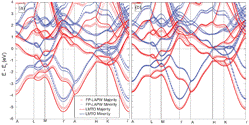Department of Physics and Astronomy: Publications and Other Research
Date of this Version
2010
Document Type
Article
Citation
Physical Review Letters, 105, 249902 (2010); DOI: 10.1103/PhysRevLett.105.249902
Abstract
The Letter [1] should have acknowledged and cited the work by Andreev [2], which was inadvertently overlooked. This latter work introduced a phenomenological surface magnetization and concluded, by analyzing exchange invariants, that it may be finite for all antiferromagnets and that those with unbroken macroscopic time-reversal symmetry can exhibit surface magnetization domains. These arguments are highly relevant to Ref. [1], which I happily acknowledge. The work [1] treats the problem of (otherwise poorly defined) boundary magnetization as a special case of a general, microscopically definable probe functional, explicitly taking into account boundary roughness and allowing for relativistic interactions. It also spells out the implications for electrically controlled magnetism using magnetoelectric and multiferroic materials.


Comments
Copyright 2010 The American Physical Society. Used by permission.